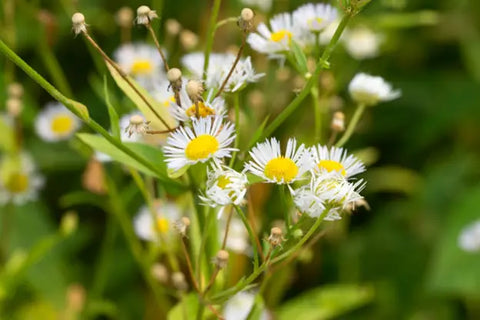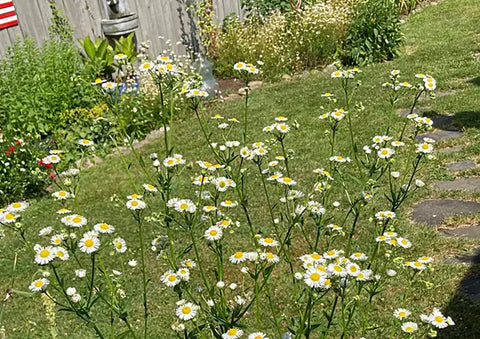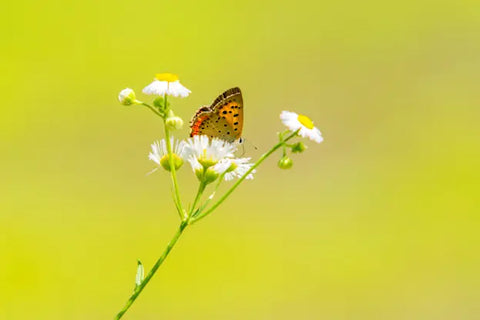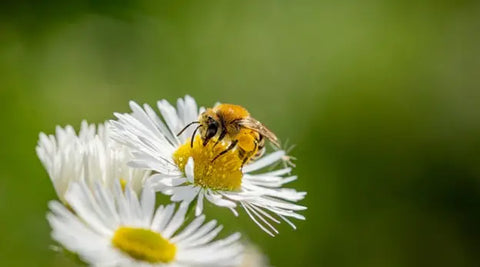The Many Health Benefits of Daisy Fleabane
Daisy Fleabane Use - Wonderful Health and Garden Benefits
Daisy Fleabane, also known as Erigeron annuus, is a beautiful wildflower that has captured the attention of gardeners, herbalists, and health enthusiasts alike. In addition to its attractive appearance, daisy fleabane uses has numerous potential health benefits, including anti-inflammatory and antioxidant properties, respiratory health benefits, and anti-microbial effects. It has also been traditionally used for digestive health. But that's not all - daisy fleabane can also be a great addition to any garden, attracting pollinators, stabilizing soil, and serving as a companion plant to deter pests and attract beneficial insects. In this article, we will take a closer look at these uses in detail.
Daisy Fleabane Use - Wonderful Health and Garden Benefits
1. What Is Daisy Fleabane?
2. Daisy Fleabane Uses In Health Benefits
3. Daisy Fleabane Uses In Gardening And Wildlife Conservation
4. Finally,
1. What Is Daisy Fleabane?
Daisy fleabane, also known by its scientific name Erigeron annuus, is a common North American wildflower that belongs to the Asteraceae family. It is a herbaceous perennial plant that typically grows to a height of 30-90 cm (12-35 inches).
Daisy fleabane has a composite flower head that looks like a daisy. The flower head has a yellow center disk, surrounded by white to pinkish petals. The petals have a fringed or toothed edge. The leaves of daisy fleabane are narrow and lance-shaped, with a slightly toothed margin. The leaves grow alternately along the stem and are typically covered in fine hairs. The seeds of it are small and have a fluffy, white pappus attached to them, which helps to disperse the seeds by wind.
The plant blooms from May to September, producing numerous flower heads that attract bees, butterflies, and other pollinators.

Daisy fleabane is native to North America and can be found growing in fields, meadows, and along roadsides from Canada down to the southeastern United States. It is a hardy plant that can thrive in a wide range of soil types and growing conditions, and it can tolerate both sun and partial shade.
Overall, daisy fleabane is a hardy and attractive plant that is easy to identify due to its daisy-like flower heads, narrowly lance-shaped leaves, and slender stems covered in fine hairs.
2. Daisy Fleabane Uses In Health Benefits
Daisy Fleabane has a long history of use in traditional medicine for its health benefits. Here are some of the main health benefits:
2.1 Medical traditional use
Fleabane is traditionally used to treat respiratory conditions such as coughs, colds, and bronchitis. Furthermore, in medical traditional use, it has traditionally been used for digestive health, which can help to relieve cramps and soothe the digestive tract
2.2 Anti-microbial properties
This kind of tree has been found to possess anti-microbial properties against various microorganisms, including bacteria and fungi. This suggests potential benefits for preventing or treating infections.

2.3 Potential anti-obesity effects
Daisy fleabane has been studied for its potential anti-obesity effects. A study found that a methanol extract of daisy fleabane reduced body weight gain and fat accumulation in mice that were fed a high-fat diet.
2.4 Anti-inflammatory
Daisy fleabane contains several compounds with anti-inflammatory properties, including flavonoids and phenolic acids. These compounds help to reduce inflammation throughout the body, which may help to prevent chronic diseases such as heart disease, diabetes, and cancer.

2.5 Antioxidant
Daisy fleabane is also rich in antioxidants, which help to protect the body against oxidative stress and cellular damage. Antioxidants have been linked to a reduced risk of chronic diseases, including cancer and heart disease.
While these findings are promising, more research is needed to confirm the efficacy and safety of this plant for these potential health benefits. It's important to talk to a healthcare provider before using it or any other natural remedies for health conditions.
3. Daisy Fleabane Uses In Gardening And Wildlife Conservation
Daisy Fleabane has several uses in gardening and wildlife conservation. Here are some details:
3.1 Gardening
Daisy fleabane is a popular plant in gardens due to its attractive appearance and ease of care. It has long-lasting flowers that come in shades of white, pink, and purple, and can bloom from spring to fall. It is also a hardy plant that can thrive in a variety of soil types and conditions, making it a great choice for gardens with varying growing conditions.

3.2 Pollinator plant
This tree is an excellent choice for gardens aiming to attract pollinators such as bees, butterflies, and hummingbirds. These flowers are a source of nectar and pollen for these pollinators, and the plant's long blooming season can provide a consistent source of food throughout the growing season.
3.3 Wildlife conservation
Daisy fleabane can also play a role in wildlife conservation. As a source of food for pollinators, it can help support the health and survival of these important species. In addition, it can provide habitat for small animals such as birds and insects, which can in turn attract larger animals such as predators that rely on these smaller species for food.

3.4 Soil stabilization
This plant has a deep and fibrous root system that can help stabilize soil and prevent erosion. This can be particularly useful in areas where soil erosion is a concern, such as hillsides or near bodies of water.
3.5 Companion planting
Daisy Fleabane can be used as a companion plant in gardens to help deter pests and attract beneficial insects. Its strong scent can repel pests such as aphids and spider mites, while its flowers can attract beneficial insects such as ladybugs and lacewings that can help control pest populations.

Overall, Daisy Fleabane is a versatile plant that can provide several benefits in gardening and wildlife conservation. Its attractive appearance, ease of care, and usefulness in attracting pollinators and providing habitat make it a great choice for gardens and natural areas. If you are seeking fleabane daisy seeds, you can refer to how to grow them here!
4. Finally,
Daisy fleabane is a versatile and beneficial plant that offers many advantages in both health and gardening. Daisy Fleabane is also hardy and can thrive in various growing conditions, making it an excellent choice for any garden. Whether you're looking to incorporate this plant into your health routine or to enhance the beauty and functionality of your garden, it is a wonderful plant that can offer a wide range of benefits. Also, if you want to grow plants but don't know where to buy seeds, you can refer to The Rike, which provides high-quality seeds for your garden.





Leave a comment